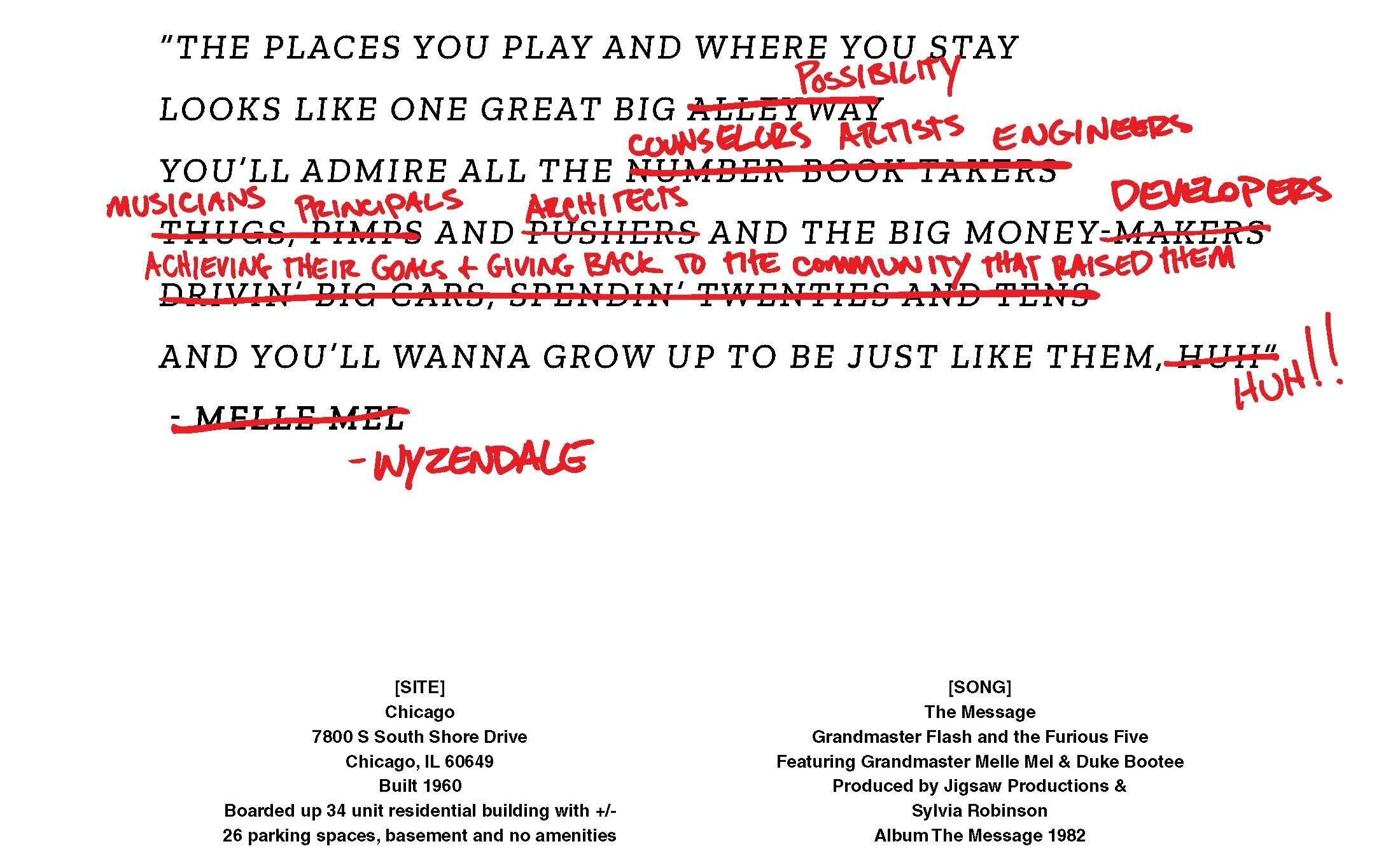Hip Hop + Architecture as Design Justice Competition
Wyzendale recently responded to the Hip Hop Architecture Camp’s Open Call for Submissions for its Hip Hop + Architecture as Design Justice Competition. This competition challenged participants to answer questions around how spaces look in a Just City which has defeated and dismantled racism and what tools we can use to bring these spaces to life. Submissions had to be inspired by a hip hop song and aimed at displaying a Just City.
Out of more than 100 submissions, Wyzendale’s concept was selected in the top 20 finalists.
Our team selected Grandmaster Flash’s 1982 classic of “The Message” as the inspiration for our submittal.
We selected this track not only because of its timelessness, longevity, and popularity, but also because of how it specifically speaks to the way stressful living conditions can impact a person’s perception of themselves and vision for their future. We used this theme as an opportunity to “remix” the track through the renovation of an existing, vacant residential building in Chicago’s South Shore neighborhood.
Titled “Project Seesaw,” our vision was to design an inspirational environment specifically for youth with programming and amenity offerings that truly poured into residents.
The full design narrative is below along with a gallery of images and assets that accompanied our submittal.
Thank you to the Hip Hop Architecture Camp for organizing this competition that has continued to expand dialogue surrounding the role the built environment has played and continues to play in racism and oppression. You can view the top three winners on Instagram. To support the important work the Hip Hop Architect, Michael Ford, is doing in this space, visit http://hiphoparchitecture.com/.
Note: The renderings below illustrate Wyzendale’s basic visualization capabilities.
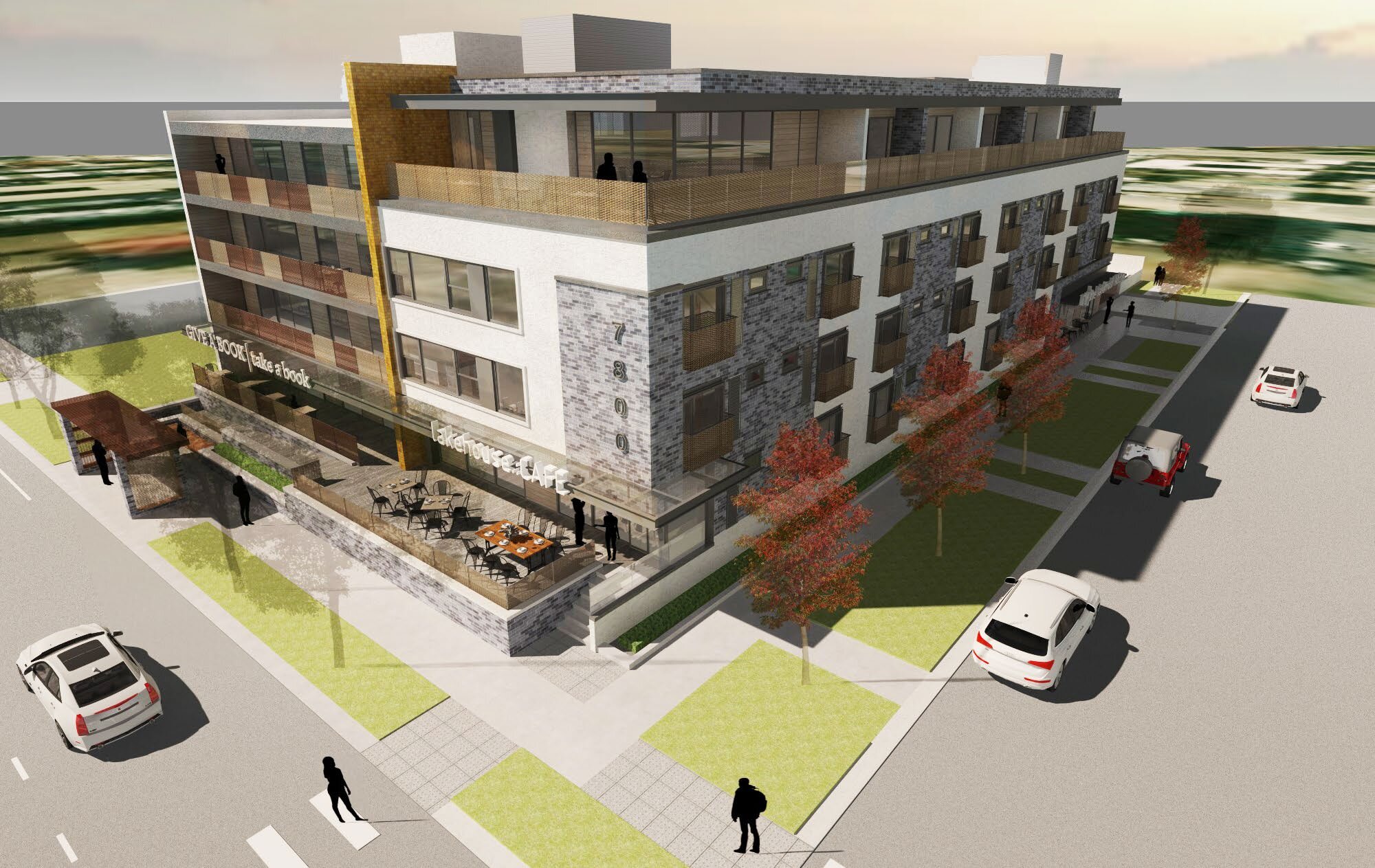
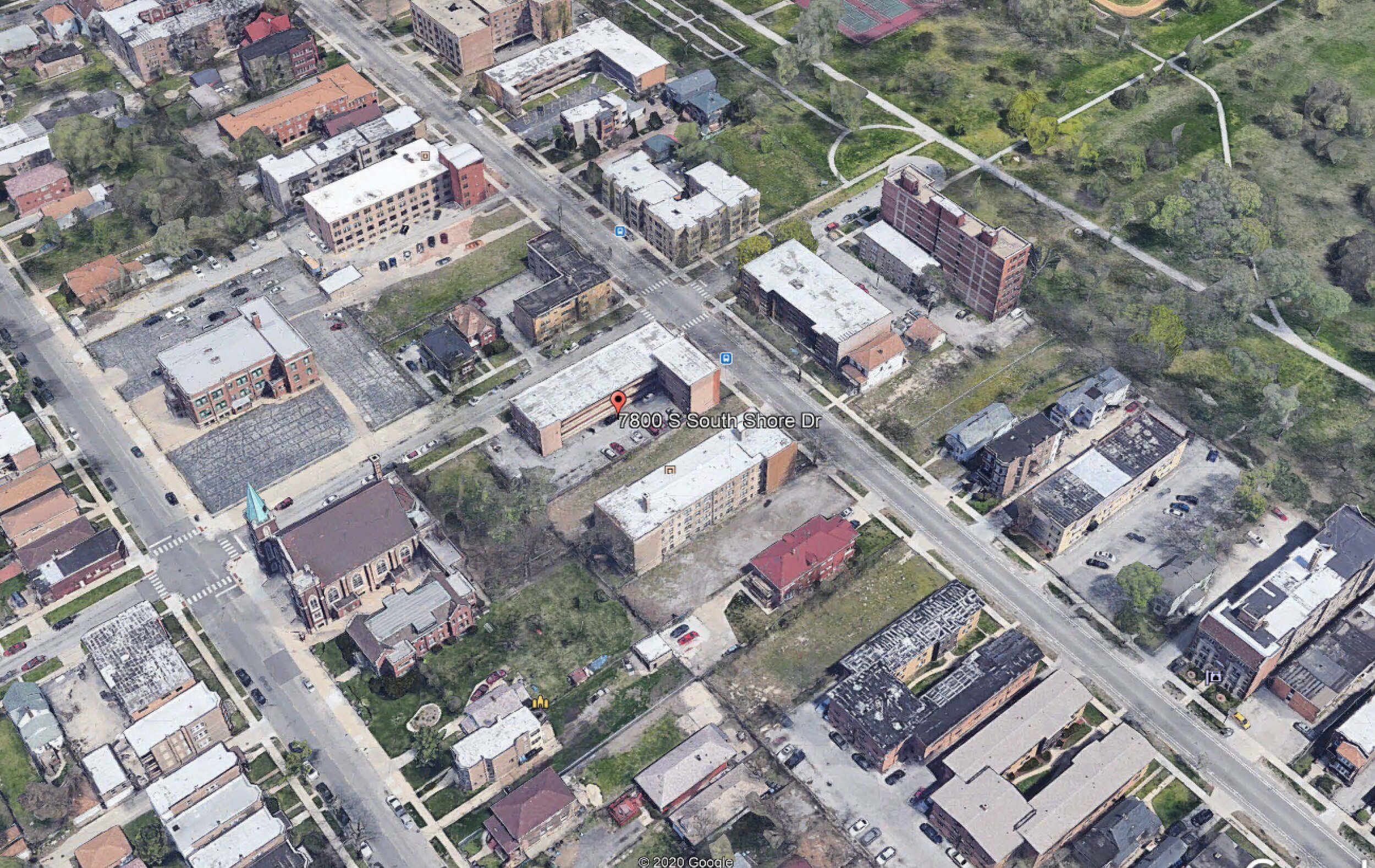
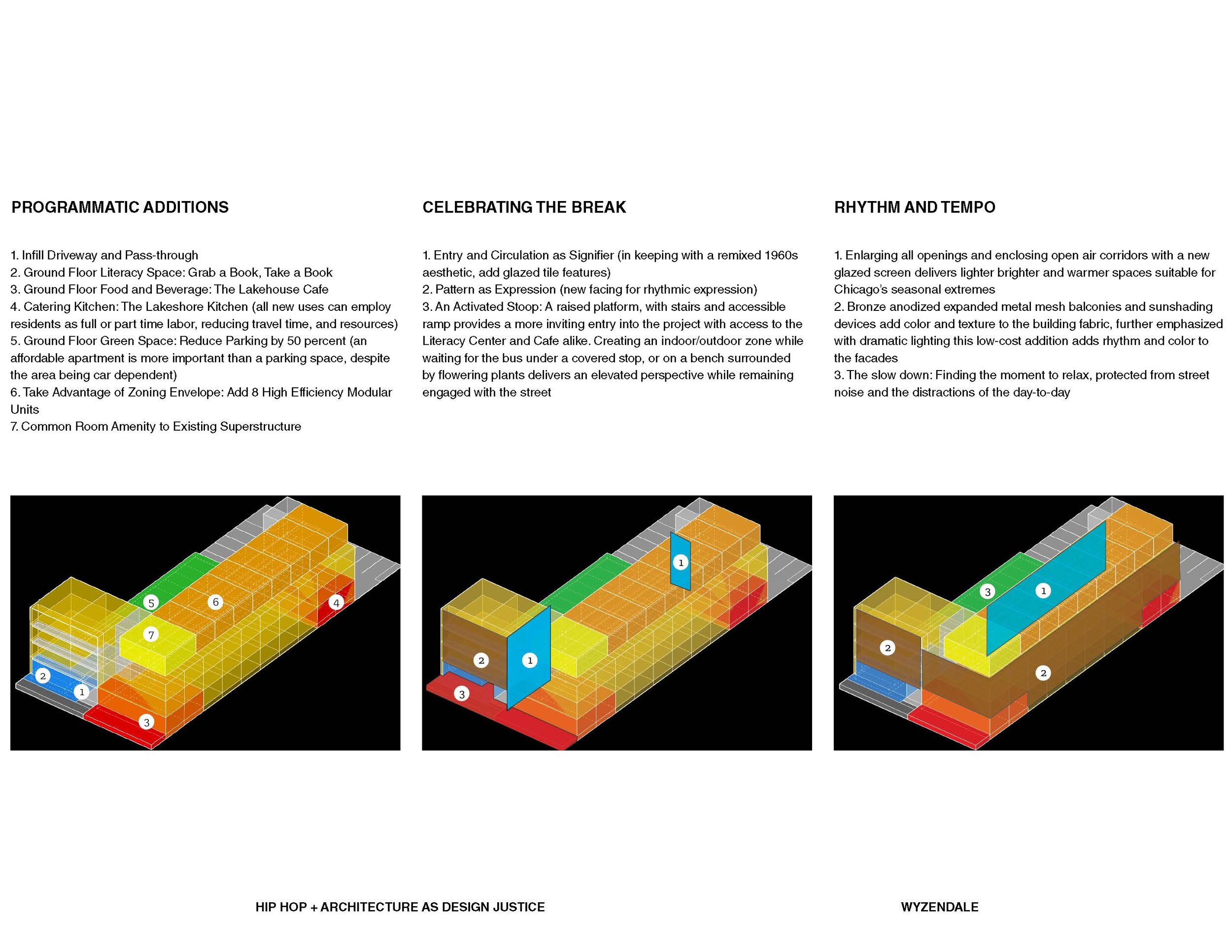
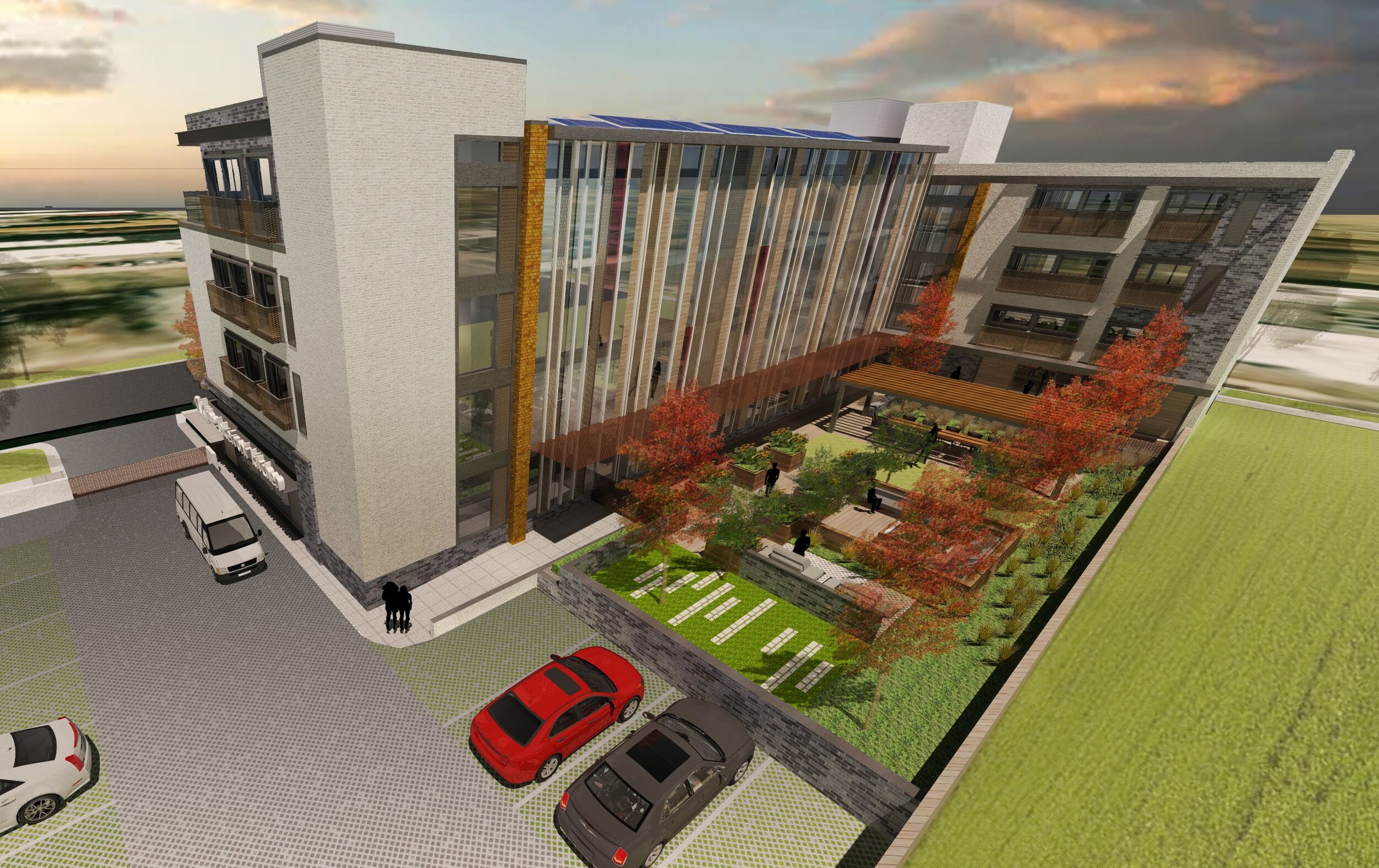
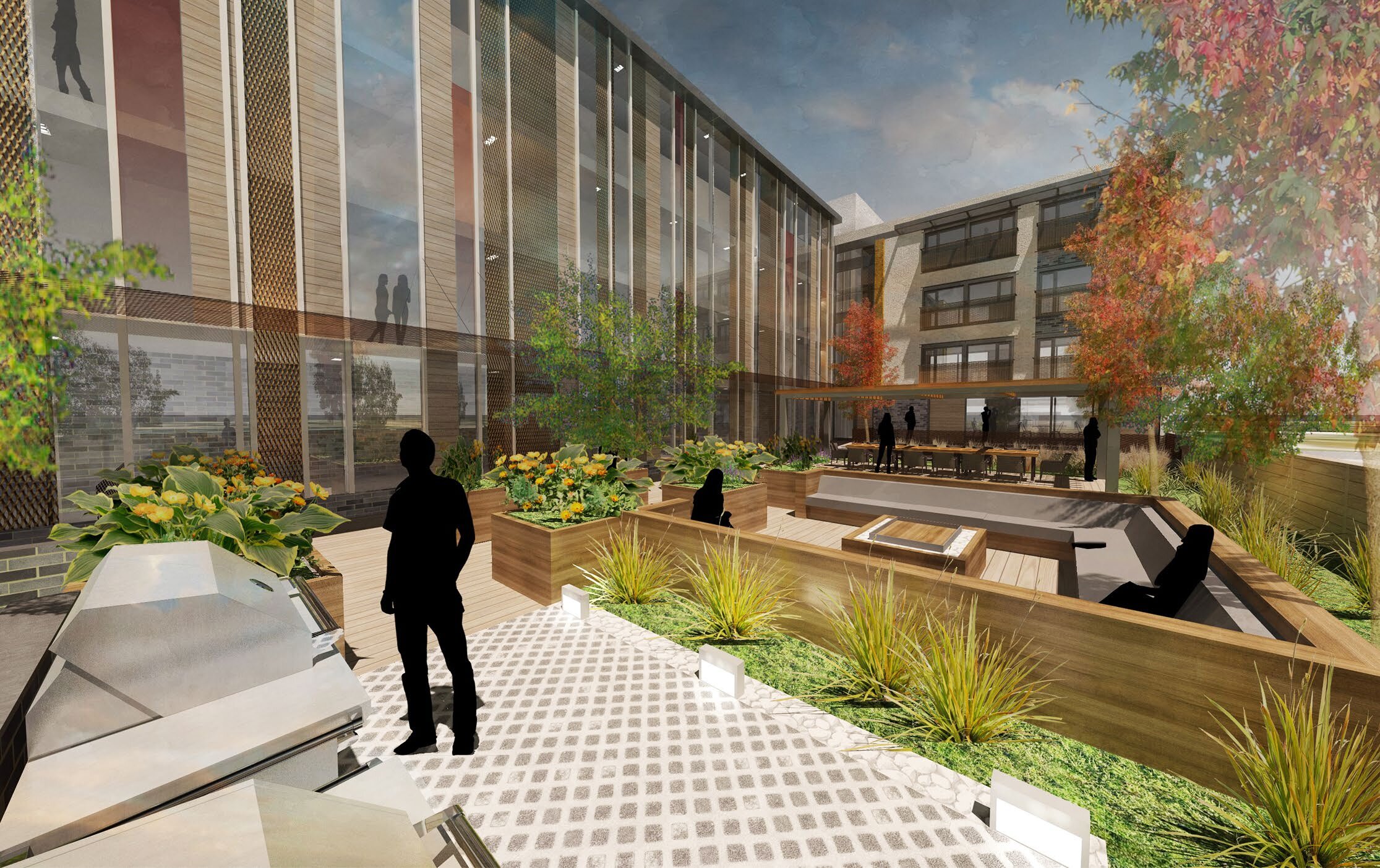
FOUNDATION
Everything that has been created is a recreation of something that already exists.
That could be why oftentimes the most classic works of art begin very simple.
If you envision classic works of art as strokes of paint on a canvas, those that continue to be carried through generations do so by leaving enough room for additions that cause minimal disruption to the original message.
Ideally, these recreations seek to improve the original form, to advance its efficiencies and address its weaknesses, to look at things in a different way.
At 7800 S. Shore Drive in Chicago’s South Shore neighborhood, we have used the frequent yet all too often unacknowledged reality those born into disinvested neighborhoods face told through Grandmaster Flash’s 1982 classic “The Message.” This is the foundation used to reimagine this forgotten structure as an inspiring, nurturing place for youth to call home.
Through amenity offerings that aim to cultivate a sense of community and specific programmatic elements that aim to educate and soothe, this facility becomes a place for occupants to explore ideas, practice mindfulness, feel secure, and ultimately unlock their full potential. It creates an environment where surroundings pour into occupants, where they are not just told they can become greater but are given the tools, guidance, and support to truly see that through.
This is The Message. This is Project Seesaw.
ANTIDOTE
‘The Message’ is timeless.
‘Don’t push me cause I’m close to the edge, I’m trying not to lose my head.’
The beat is universally recognizable, sampled endlessly, and referenced frequently in hundreds of tracks. You hear the hook and feel like you are somewhere else. It provides you with an immediate sense of place, overcoming you with a wave of happiness and nostalgia.
But when you dig deeper into the lyrics, ‘The Message’ triggers much different emotions. You want the beat. You want the hook. But you don’t want those lyrics.
This is the same issue faced by minority cultures. When a minority culture is celebrated or embraced, there is pushback.
People want the music, but when you play it too loud, you’re labeled disruptive. People want the hair, but when you wear it to work, you’re labeled unprofessional. People want the style, but when the clothes are too vibrant, you’re labeled cocky.
People want the Message, but when they dig into the meaning of it, they deny their experience.
They don’t want that unsettling, unfiltered, raw truth of the reality you are born into. The reality ‘The Message’ speaks to. They prefer to turn a blind eye to avoid discomfort because when they do that, it makes it easier to deny the role society has played in creating that reality, either passively or actively.
They just want the catchy hook to get the party rowdy. Thanks Puffy.
Our antidote to this is to design a place that those passing by will see in its entirety, and where all those who occupy the inside will also be seen in their entirety — a place with no blind spots.
ENVIRONMENT
If we eliminate the stressor of survival, imagine what our youth could focus on instead.
‘It’s like a jungle sometimes, It makes me wonder how I keep from goin’ under.’
How do we create a place for youth to live and thrive, not merely survive?
Project Seesaw takes the existing structure at 7800 and renovates it into affordable housing designed specifically for youth. Our concept creates a place to call home that provokes a sense of light and hope so occupants know they are capable of doing more, of becoming more. We aim to create an environment that enables youth to imagine what they can become, to explore possibilities and execute ideas.
‘I can’t take the smell, can’t take the noise, Got no money to move out, I guess I got no choice.’
The environment at Project Seesaw pours into occupants — it inspires, soothes, and stimulates. It becomes a home that provides a continuous source of belief in the ability for youth to achieve their full potential by cutting out background noise and providing comfort for focus.
Programmatic additions include an infill driveway/passthrough and a 50 percent reduction in parking. At the ground floor, there is literacy space, a cafe, catering kitchen, and green space. Eight high-efficiency modular units are added to the building’s roof as well as a community room.
COMMUNITY
You can be greater if you see yourself in others who are greater.
‘The places you play and where you stay, Looks like one great big alleyway. You’ll admire all the number-book takers, Thugs, pimps and pushers and the big money-makers. Drivin’ big cars, spendin’ twenties and tens, And you’ll wanna grow up to be just like them, huh.’
Project Seesaw doesn’t want you to imagine what you could be. It enables you to embody your full potential. We have created a structure that facilitates connection between occupants, between the facility and the street, and between occupants and those in the surrounding community. These connections are additional driving factors that continue to pour into occupants and create an environment of inspiration.
‘A child is born with no state of mind, Blind to the ways of mankind. God is smilin’ on you but he’s frownin’ too, Because only God knows what you’ll go through.’
Lining the halls will be prominent images of influential locals of all backgrounds and status who have walked the very streets surrounding the building and have gone on to achieve more. And these sources of inspiration won’t simply exist in black and white images on the wall. Strategic programming will bring them into the space to facilitate workshops, providing mentoring, and most importantly, create lasting relationships.
Our concept removes the existing fence that currently lines the exterior and opens it to the community to get more people out on the streets and interacting with those in the building. By breaking down these barriers, we cultivate a sense of connection between occupants and the neighborhood.


